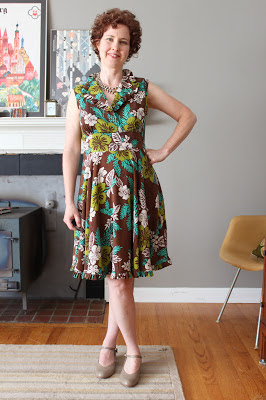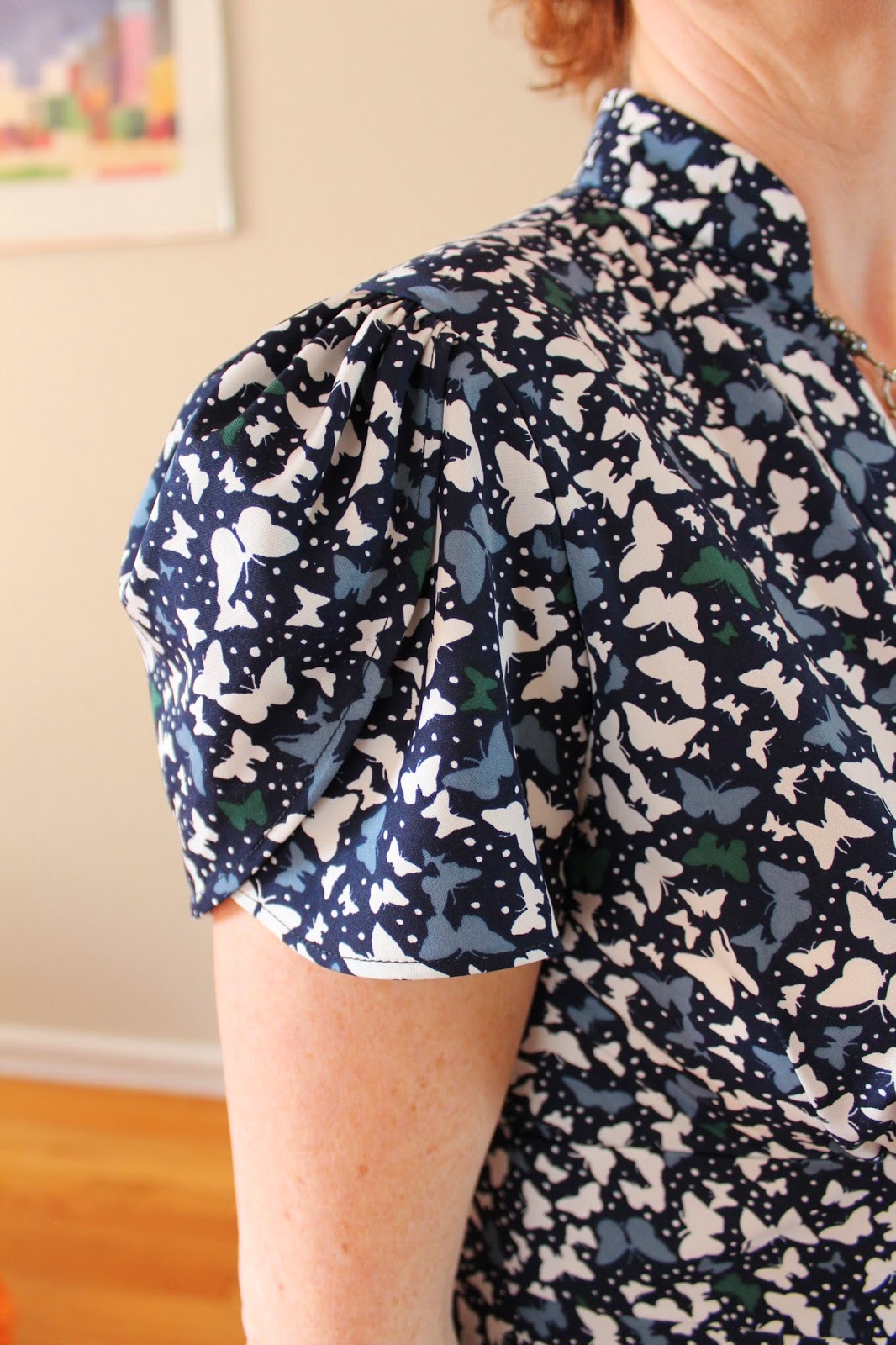Oh, to love jeans as much as most people do! Life would be easier. Sometimes I like them okay (usually when I'm on the thinner side of my varying body composition), but honestly, even then they aren't my favorite. And for swing dancing, they make me extremely sweaty.
You've got to understand: I am usually cold. I haven't reached that time of life when overheating at random moments becomes a problem. I'm the one piling two sweaters and a shawl over silk long underwear and a t-shirt. So if I get too hot wearing jeans for swing dancing, I just don't understand how lots of folks do this very physical activity dressed in our culture's casual uniform.
For evening dances, of course I am going to wear a nice dress or a skirt, but for daytime classes at weekend workshops I need something casual, comfortable, packable, reasonably cute and, ideally, not too mom-like. Lots of the dancers at these events are in their twenties and thirties. I could actually be the mother of most of them. And I'm fine with that, but I just don't want it written all over my outfit.
Since I find a dress so much nicer to wear than separates, I made up a swing-dance-themed Lady Skater dress using an event t-shirt stolen from my husband. I've written about the swing dance mecca that is Lindy Focus before: a five-day extravaganza with nearly 1,000 attendees and culminating with a huge New Years' Eve celebration. I have my own t-shirt from the event, but it wasn't nearly enough fabric to recut into something else. Good thing his shirt was an XL. Any smaller and I wouldn't have been able to get the Lady Skater size 3 bodice out of it.
The non-Lady-Skater addition (I always have to tweak something, it seems!) is the sleeve, which was borrowed from an Ottobre Woman t-shirt pattern from the 2/2007 issue. I picked this sleeve because I have used it before and liked it. The binding at the bottom of the sleeve is eked out of the ribbing from the neckband of my husband's shirt.
 |
| Ottobre Woman 2/2007 Rose Top sleeve. This one is gathered both at the cap and the hem. |
I've had good success with swapping in a gathered sleeve for another type of sleeve on a range of patterns. If they don't fit exactly, I tinker with the gathering until they go in. Probably not technically correct, but it usually works out well enough for my satisfaction.
The skirt portion is made from an active wear polyester knit with a high (12%) spandex content from Hancock's. I bought several yards of this at 40% off, and I am hoping to make some more basic items from it. With all that stretch, it is very, very forgiving and I hope it will perform better in terms of wear and pilling than a ponte-type of knit.
The leopard print leggings are McCall's 6360, and are blogged about here.

























